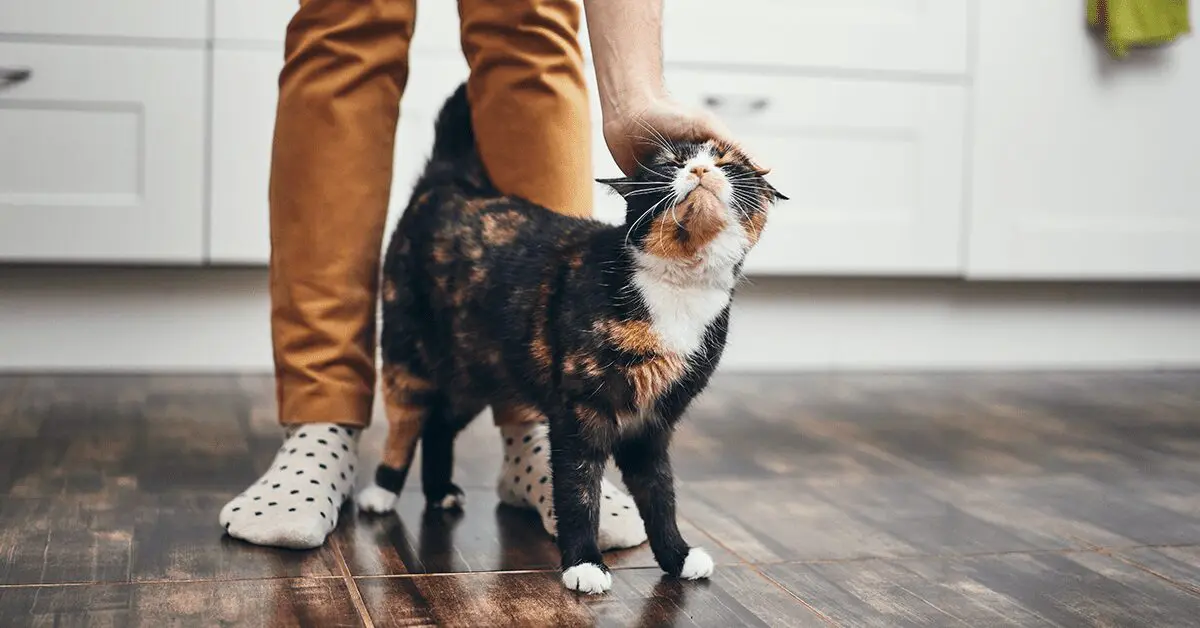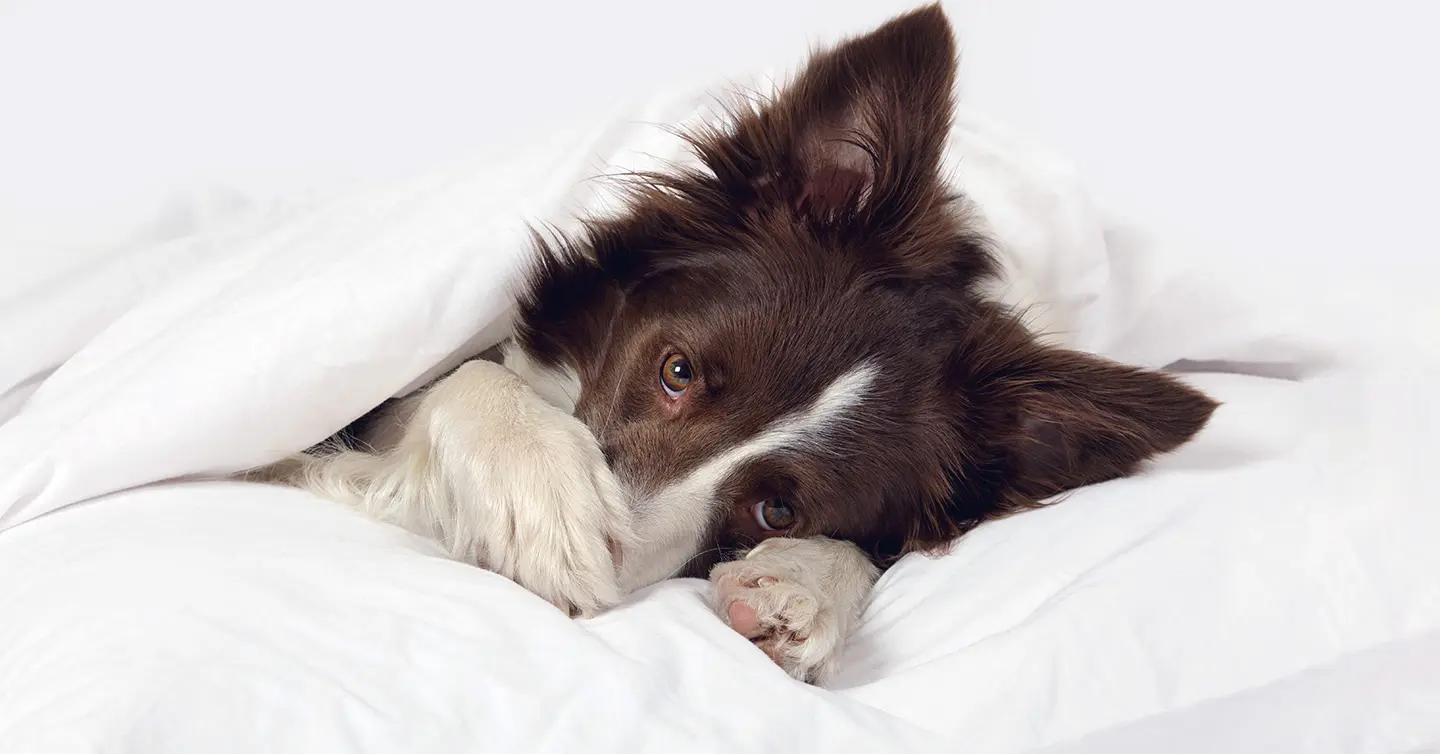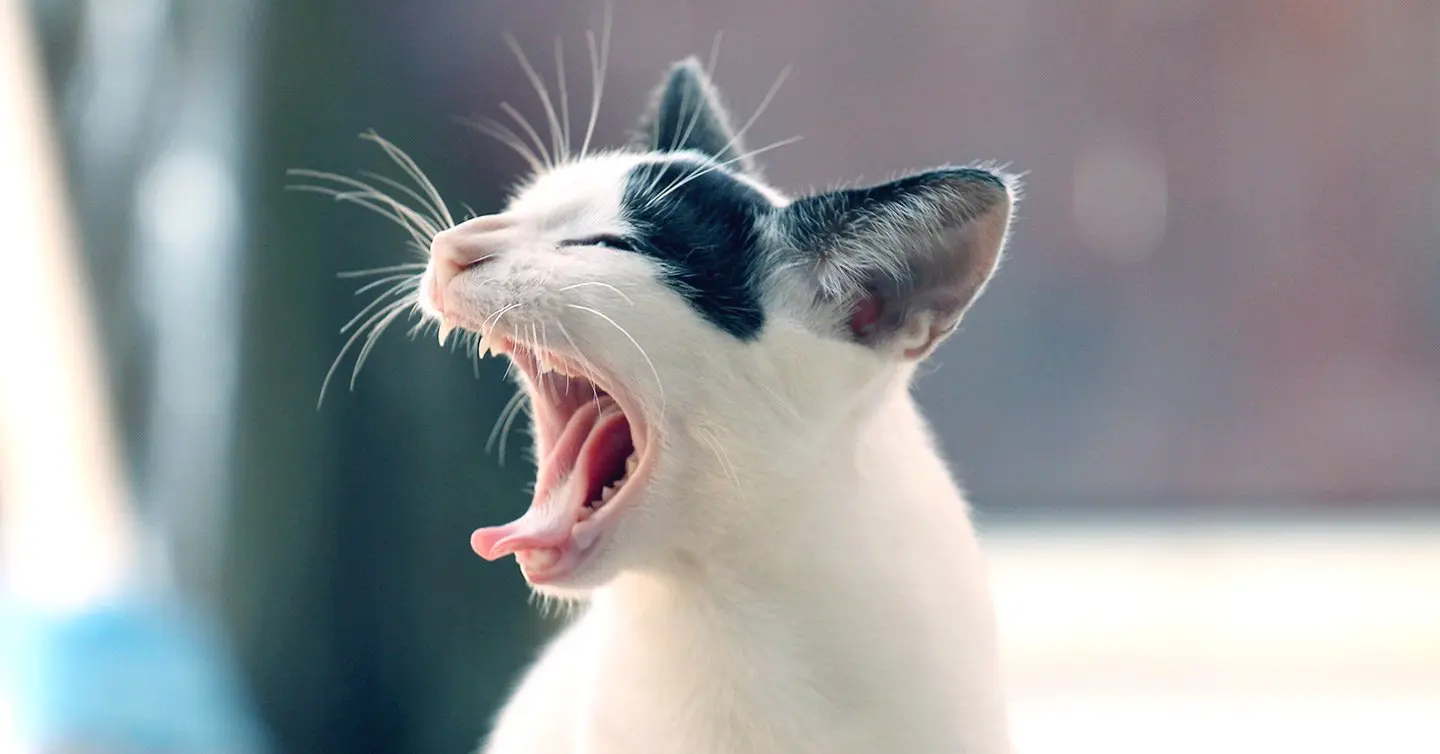Key Points
- When a cat is in heat, she will display changes in behavior such as yowling, pacing, and assuming the mating position.
- The heat (also known as the estrous cycle) usually lasts up to 7 days, but length can range from 1-21 days.
- A cat’s first heat cycle typically begins around 7 months of age, but some may start as early as 4 months old.
- Veterinarians recommend you spay your cat to prevent an accidental litter of kittens and decrease the chances of potential health complications.
Is your female cat acting a little…strange? Maybe she is being more vocal than usual, or giving you extra snuggles. She may be rolling on the ground, or scratching at the door trying to get outside.
These behaviors can make you wonder if your kitty is stressed, hyperactive, or even possessed. But a cat in heat will do all of these things and more.
A cat’s heat, or estrous cycle, is when she is the most fertile and ready for mating. Her first heat is usually around 6 or 7 months of age, occurring every 3-4 weeks.
How do I know if my cat is in heat?
Chances are, if your cat is in heat, you’ll be able to tell right away. You may notice her incessantly yowling — a mixture of wailing and meowing — while pacing back and forth.
She may also assume the mating position (raising her rear end in the air) and show you extra affection. Like a hormone-filled teenager, her behavior can become a little erratic.
Behavior changes can include demanding affection and rubbing up against people and/or furniture more than usual. Female cats may roll around more and raise their behinds when pet. Although less common, some cats may urinate more or even spray on surfaces when in heat.
Signs of a cat in heat include:
- Behavioral changes
- Unusual vocalizations
- Licking genitals
- Loss of appetite
- Urine spraying outside the litter box
- Begging to go outside
- Excessive grooming
If breeding isn’t in the picture, most veterinarians recommend spaying your cat. Not only will spaying save you both from a monthly week of stress, but it will also prevent an accidental litter of kittens. Spaying can also decrease health complications.
As your cat grows up, a Pumpkin Cat Insurance plan can help provide coverage for eligible vet bills. So, when unexpected accidents and illnesses happen in the future, you’ll have one less stressor to worry about.
When does a cat go into heat?
After their first heat, a female cat will cycle through heat every 3-4 weeks unless they become pregnant. While wild cats usually go into heat only during the breeding season (spring and summer), indoor cats may cycle through estrous year-round.

Cat expert Dr. Janet Cutler, PhD is a certified cat behaviorist and contributing writer at Cat World. She explains that the heat cycle is dependent on various factors, including weather, daylight hours, and even location.
“Cats will have their first heat cycle when they reach puberty, and that can happen between 4 and 12 months of age. The timing of heat cycles can depend on where you and your cat live, as it can depend on temperature and the number of hours of daylight. In the Northern Hemisphere, cats often have heat cycles from January to fall, but living indoors can affect this and they could have them throughout the full year.”
Cats can be in heat for up to 9-10 days if they aren’t bred by a male and can cycle every 3 weeks. Most cats have up to four cycles per year, but it’s not uncommon for cats to have cycles more often.
How to care for your cat in heat
When your kitty is in heat, she will probably need some extra TLC to help ease her discomfort. Cats in heat do best in calm environments. So, reducing stressful situations like loud noises or strangers in your home will help them while they’re in heat. It’s probably not the best idea to host a party or do an extreme home renovation while your cat is in heat.
Here are a few ways to care for your girl:
Create a comfortable space: Your cat may like sleeping on a warm blanket fresh out of the dryer or a heating pad. You can also play soft, relaxing music, and try pheromone plug-ins to add to the experience.
Reduce the risk of accidents: To avoid spraying, keep your cat’s litter box as clean as possible. This will encourage her to mark the litter box rather than your sofa.
Create a distraction: Extra playtime will also help distract her during estrous. Be sure to stock up on catnip, toys, and treats, and get ready to spend some extra time entertaining your cat.
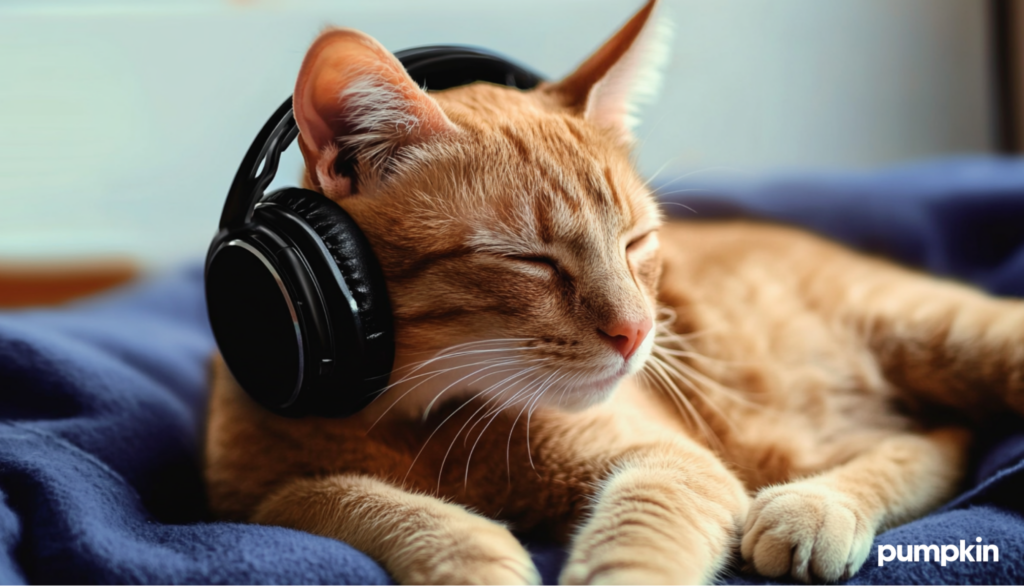
Dr. Cutler notes that patience is one of the most important things to remember while your cat is in heat.
“Cats who are in heat can have very sudden and obvious changes in their behavior, some of which people could find a bit frustrating. Trying to stay patient with your cat is very important, as this is simply a change she is experiencing due to hormonal changes in her body.
“If you do not want your female cat to become pregnant, it’s important to make sure she doesn’t have access to intact male cats. This could mean separation of cats in your home if you have both, or making sure she has no chance of escaping from your home.
“While many cats in heat become more affectionate, some could also be more irritable and want to be left alone. Giving them access to a quiet, comfortable place to rest could be helpful.”
Finally, give her space when she needs it. If she nips at you or flicks her tail when you try to pet or snuggle her, back off.
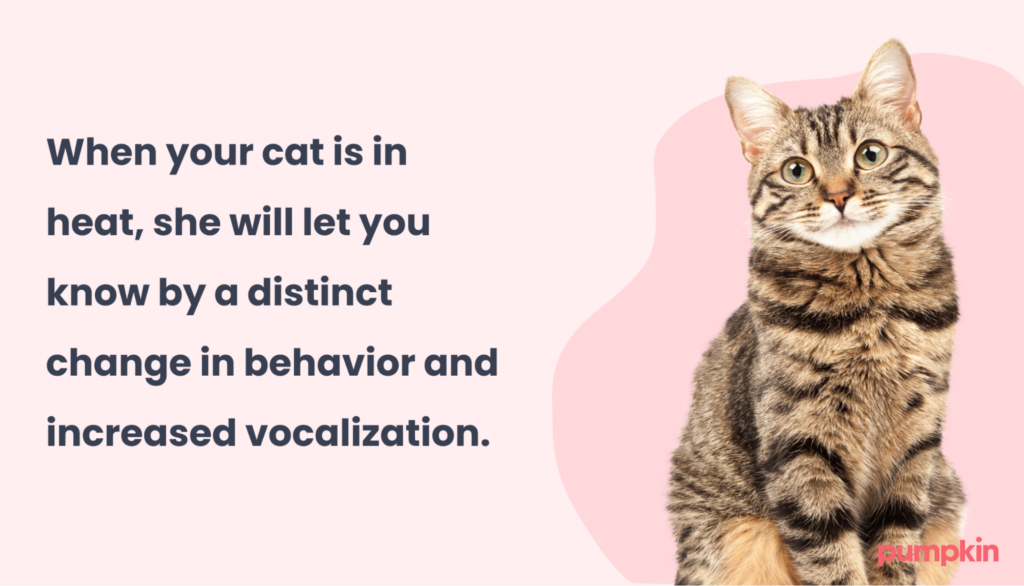
When in doubt, you can always consult your veterinarian for advice.
Why should you spay your cat?
When you have your cat spayed, she will have her ovaries removed. This means her body won’t produce estrogen and she won’t go into heat. This will usually stop the associated behaviors, such as pacing and crying.
Spaying your cat ensures she never gives birth to kittens. Unless you are intentionally breeding a pure-breed cat such as a Ragdoll, this is an important part of being a responsible pet owner. Plus, you’ll avoid any pregnancy complications and reduce the risk of some infections and cancers.
For male cats, neutering is recommended. This will help to keep the number of stray cats down in your area and can have a positive impact on their behavior.
Knowing when your cat is in heat
Once your cat has reached sexual maturity, they will start going in heat. Signs of heat may include demands for attention, loud howling, and pacing. During the estrous period, make sure your kitty has somewhere cozy to relax and distract them with toys and catnip.
